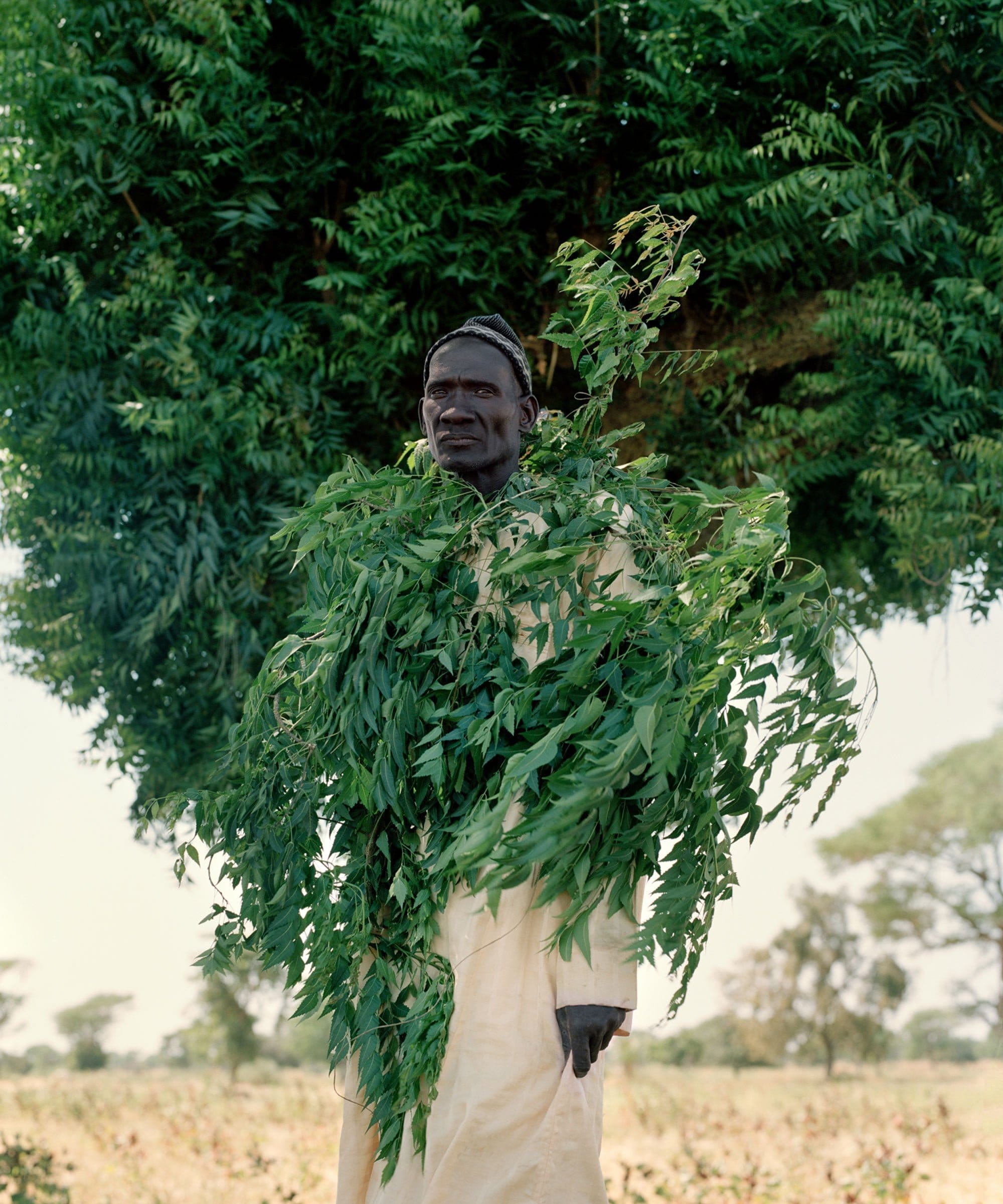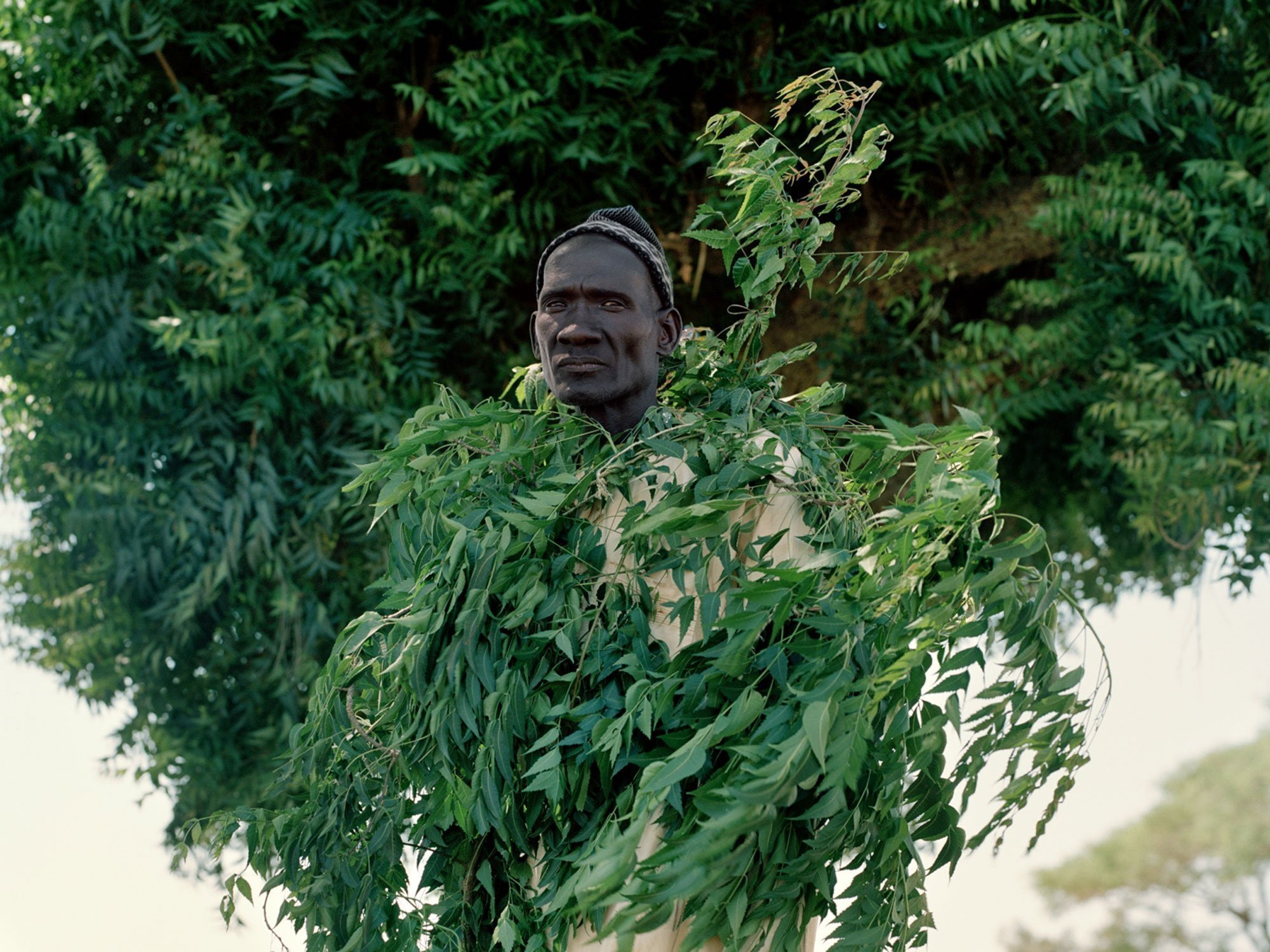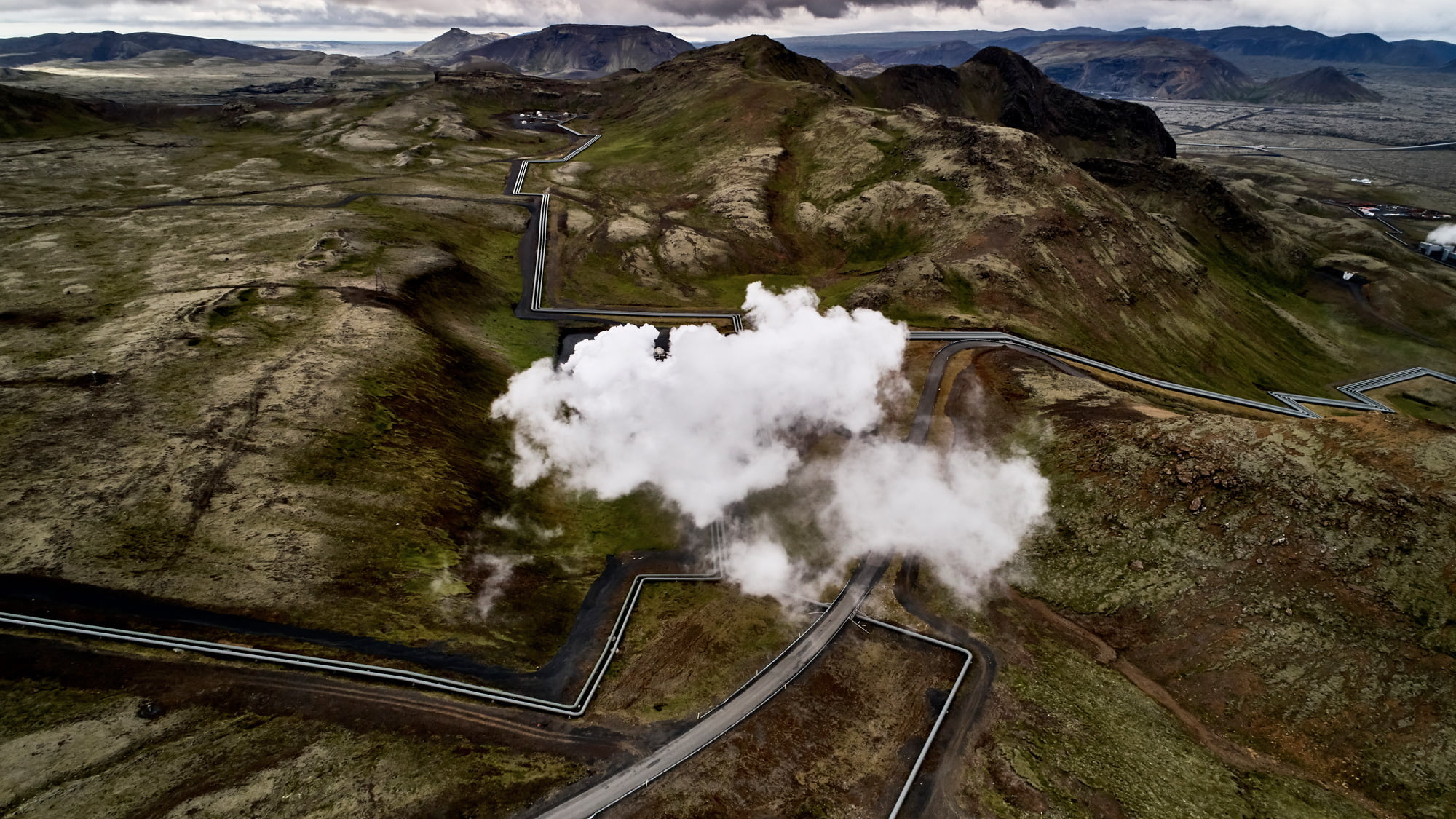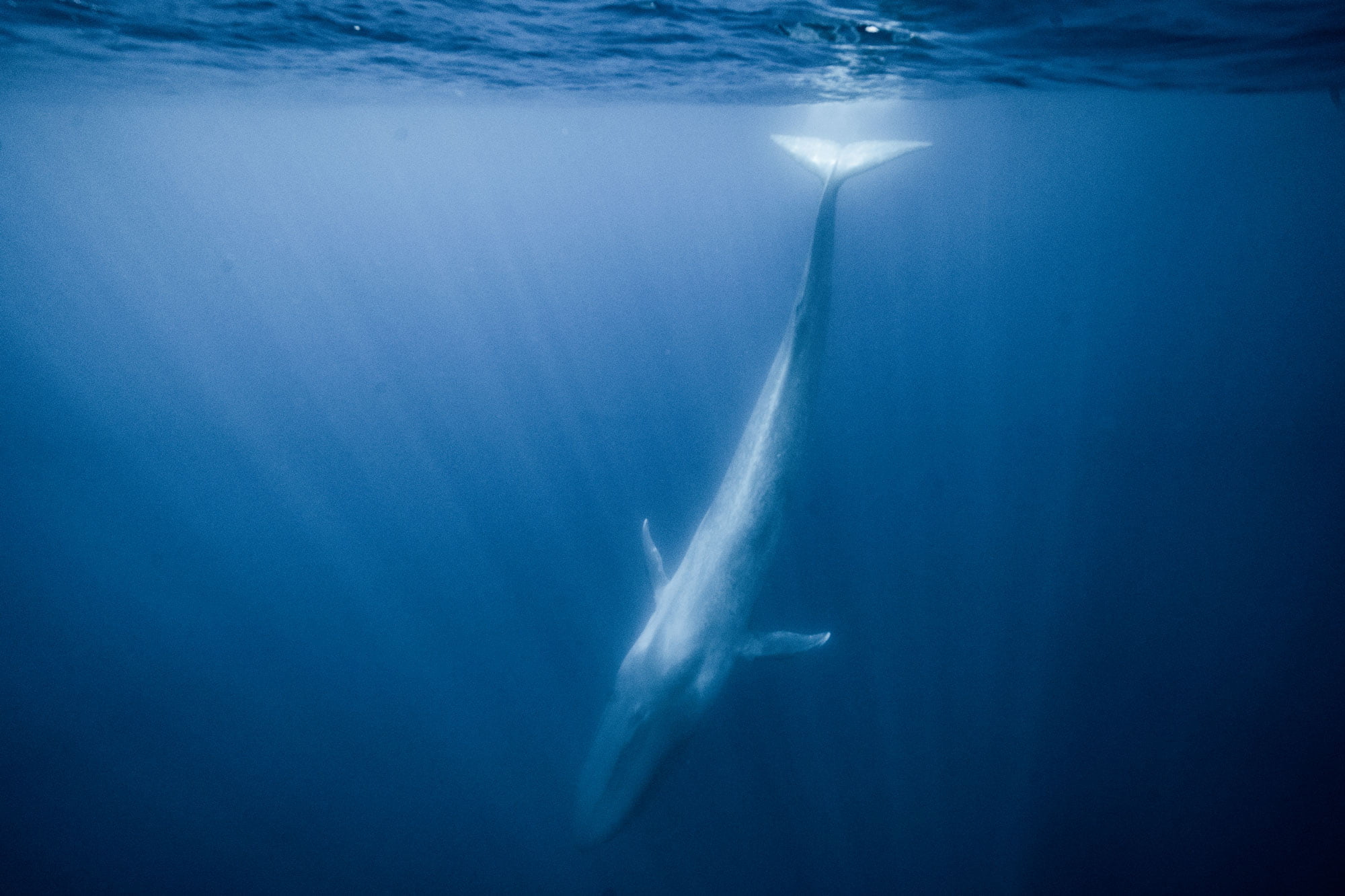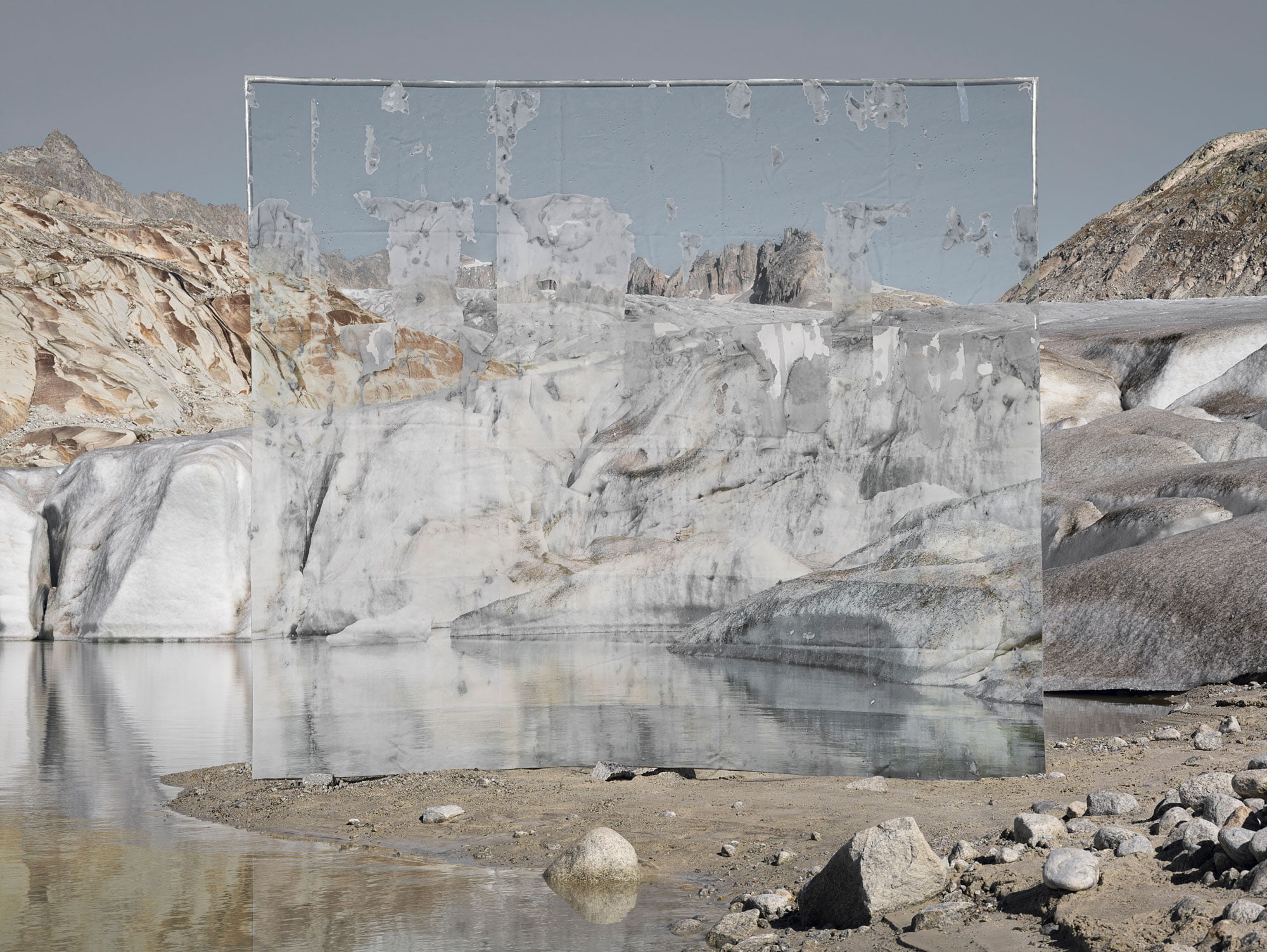These extraordinary photos by the artists Karoline Hjorth and Riitta Ikonen offer a new perspective on our place in the world, as the subjects seem to melt into the landscape around them.
Where do we end and where does nature begin?
That’s the question that these extraordinary photos, by the artists Karoline Hjorth and Riitta Ikonen, seem to ask us.
The Norwegian-Finnish duo have spent much of the last decade photographing people enveloped in nature – hidden among rocks, up to their necks in bogs or encased in ice.
Each image features a solitary figure in a natural setting that they’ve helped choose. They’re dressed in what the artists call “wearable sculptures”, made from natural materials found at the location, so they appear to be blending into the landscape. Or is the landscape blending into them?
The project has taken Karoline and Riitta as far afield as Japan, Senegal, Iceland and the US, to snowy mountaintops, windswept bays and pockets of nature in the hearts of cities. They are now preparing to publish their second book of the photos from the project, to mark its tenth anniversary.
Initially, the series was inspired by Scandinavian folk tales, but over time the artists have broadened their scope and let their collaborators lead the way. The name of the project, Eyes as Big as Plates, draws on a description of the troll in the tale of the Three Billy Goats Gruff, but also evokes the sense of openness that the pair look for in the people they photograph.
The images are at once beautiful, melancholy, unsettling and often unexpectedly funny.
“We have a lot of fun taking the pictures,” says Riitta. “We vowed early on to continue as long as it’s fun, and it’s still fun. We’re learning so much.”
Many of the subjects of the photos are strangers who Riitta and Karoline simply found on streets, in cafes, even swimming baths. Others they already knew. “When we see someone we want to photograph, we don’t even have to say anything,” says Karoline. “We just look at each other.”
What happens next depends on what they learn about the person they’ve met, where they feel they belong and what kind of connection they have with nature.
While the pair have a lot of fun, the shoot itself tends to have a different atmosphere, says Riitta. “There’s a serene feeling, it’s quiet. Maybe for two hours this person sits in a bog or on a rock, we’re building this sculpture around them. They get to experience their own landscape in a way maybe they don’t usually.”
The project doesn’t have any particular agenda, but the artists talk about “subtle activism” – using arresting images to draw people’s attention to nature and how humans fit into it. “We bring up a conversation that opens up somebody’s mind and then they might change their perspective,” says Riitta. “It started with folk tales and how people would personify different natural phenomena, give them a human form, make them understandable. Maybe that’s a way that we could approach climate change. If you understand more, you’ll care more. We’re not the ones to say if it works.”
- Pre-order the book, Eyes as Big as Plates 2, here.
Ode to Earth
For more stunning and surprising views of the beauty of Earth’s nature, head to WaterBear to find a special collection of docs curated by 5 Media for Earth Day.


Astrid, wearing rhubarb, Stavanger, Norway. Karoline says: “This is a homage to Huldra, the forest maiden. We were quite busy and had not prepared a costume, but Astrid had a fantastically large tree of rhubarb that she wanted to get rid of for years so we cut the bush down and brought her and the rhubarb to the arboretum.”

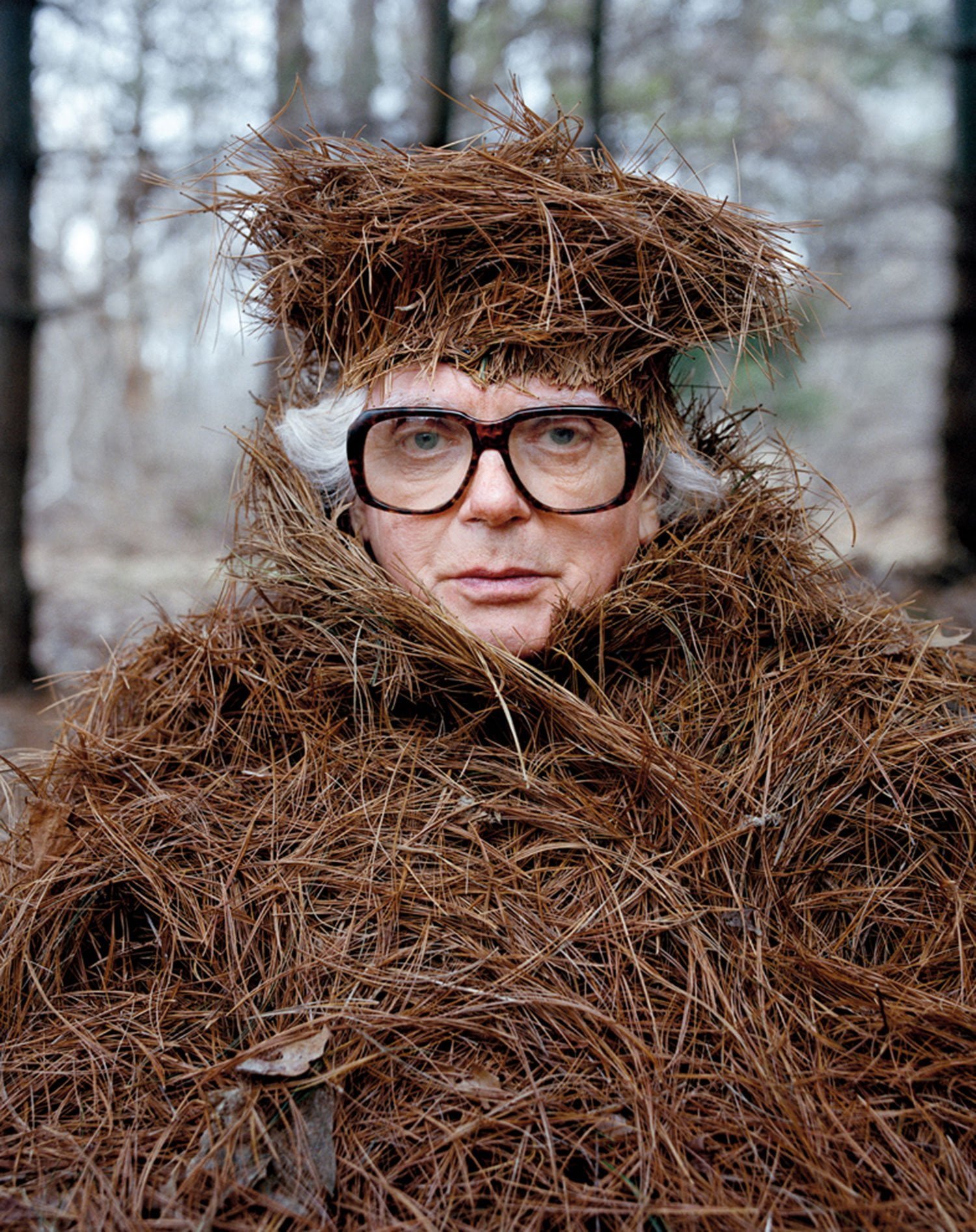
Bob, wearing pine needles, Queens, New York. “We met Bob at the Indoor Gardening Society of New York,” says Karoline. “We gave him a business card and we were crossing fingers he’d call us, and he did. He has an impeccable style that he says he’s been sporting for eight decades. He kindly asked us not to mess with his style so we promised to keep that, and Riitta added a beautiful portion of pine needles.”


Karin, wearing moss, Jelløya, Norway. “We were on a stroll to the beach and on the road we met Karin,” says Karoline. “She and her son were out photographing the sunset.” Karin grew up partly in Switzerland, partly in Nigeria, and has a special view on life and nature through voodoo culture in Nigeria and the Swiss view on nature.

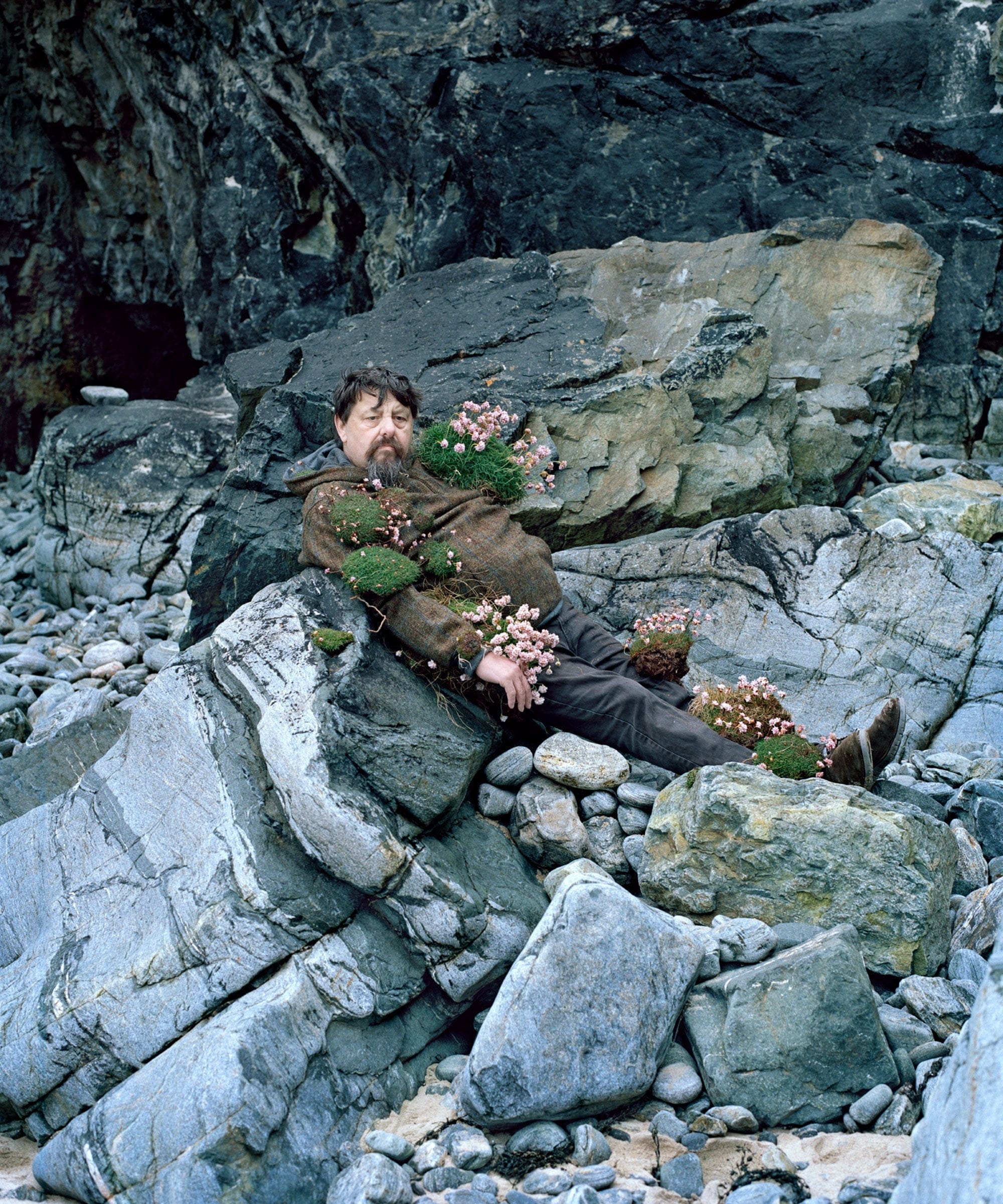
Ron, wearing sea thrift, Isle of Lewis, Scotland. “Psychotic and proud” reads the tattoo on Ron’s arm. Known as the Billy Connolly of the mental health world, he makes a living telling darkly humorous stories about his experiences with mental illness.
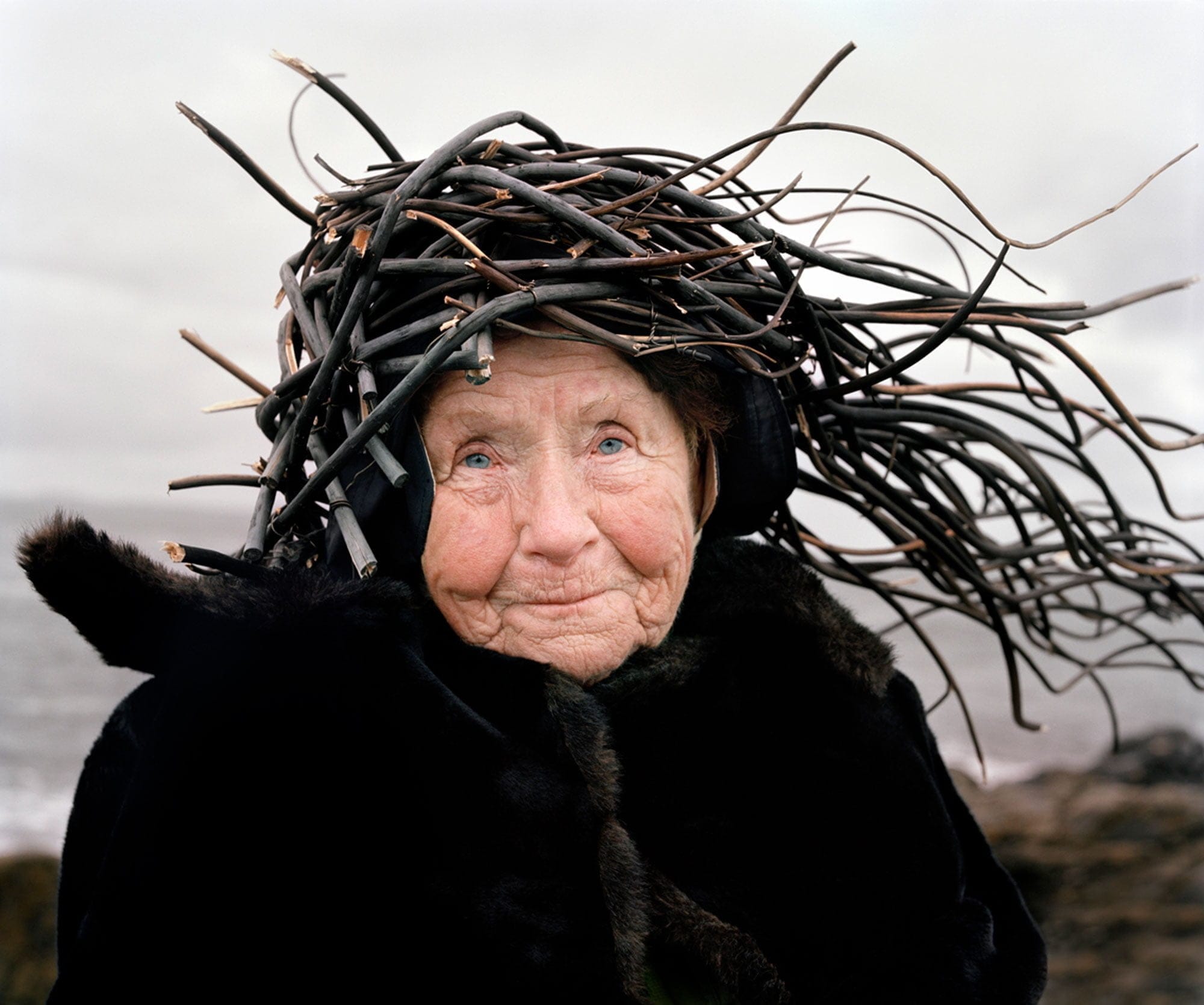
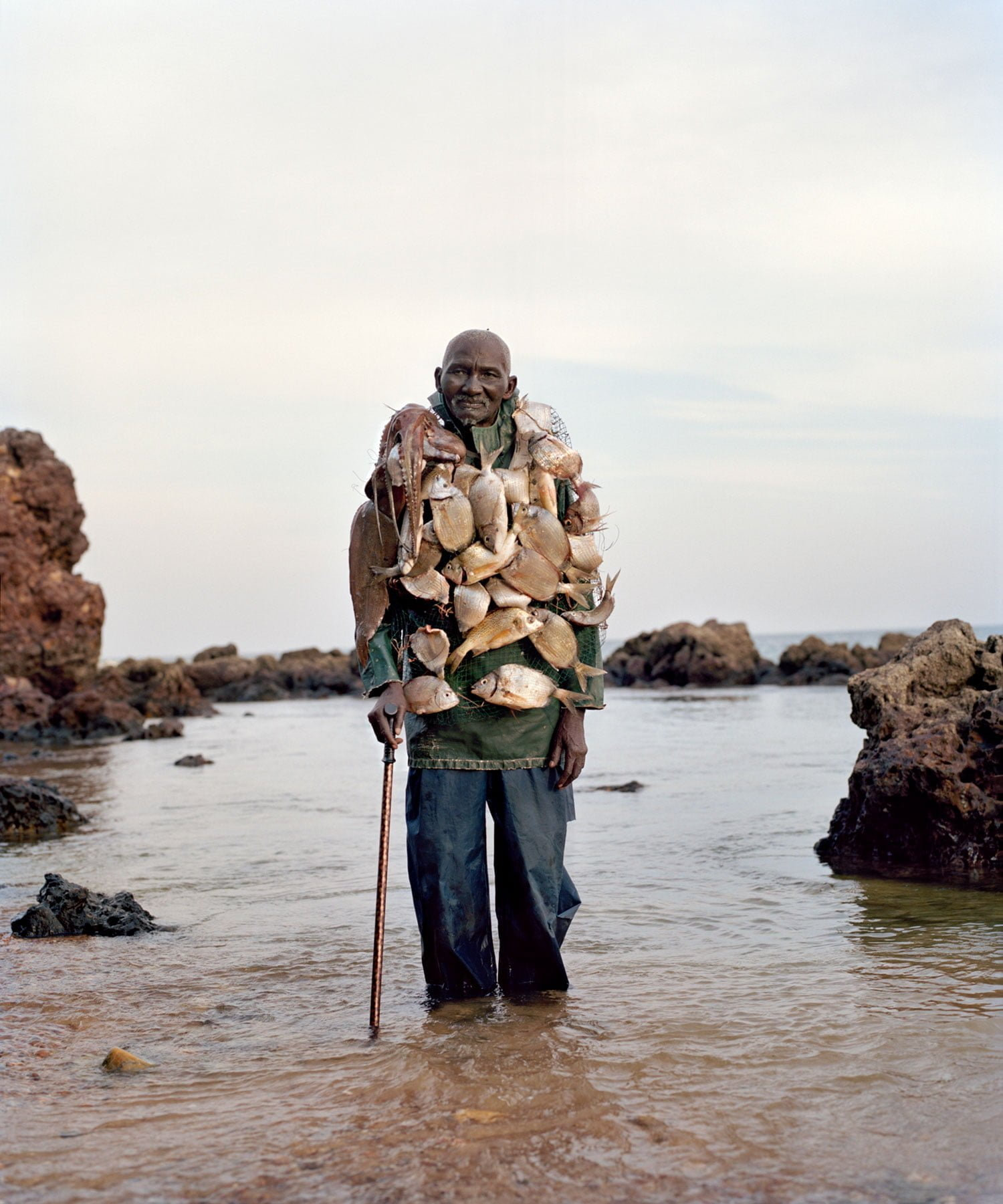
Boubou, wearing fish, Terrou Baye Sogui harbour, Dakar, Senegal. We were looking for locations in the city of Dakar and went to the Terrou Baye Sogui, a fisherman’s harbour. Boubou was looking very stylish. We went to his home and listened to stories from his life. He is wearing six kilos of fish and octopus, standing in a tidal pool at low tide.

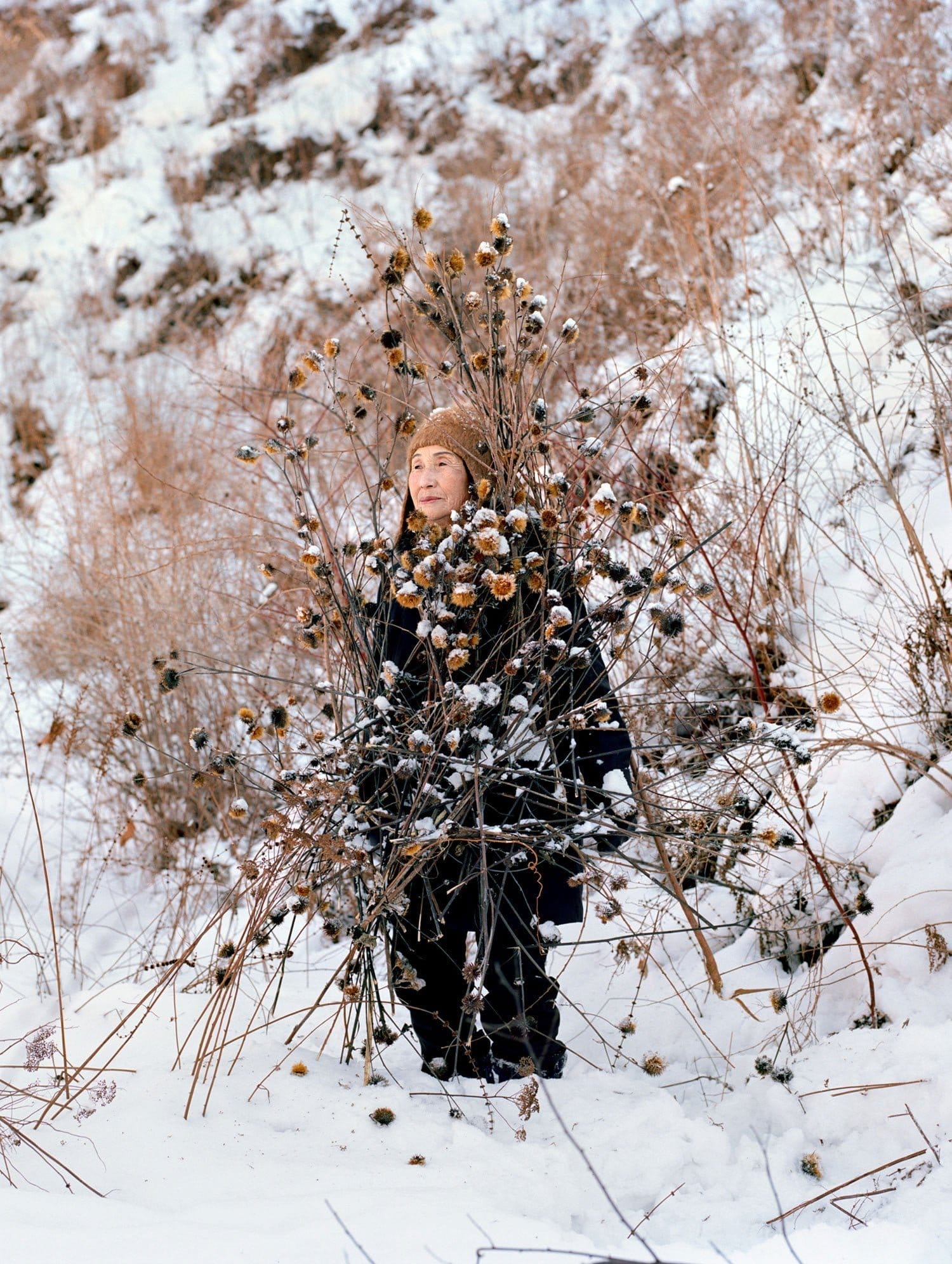
Mrs Sim, wearing surichi stems, Hwang Byng San mountain, South Korea. Riitta says: “We met Mrs Sim in a village up in the mountains. She is a self-confessed city girl. She told us a lot about her love for life, and how she is much freer after her husband passed away. We took her to the mountain, and she’s wearing some spiky reeds from the mountain.

